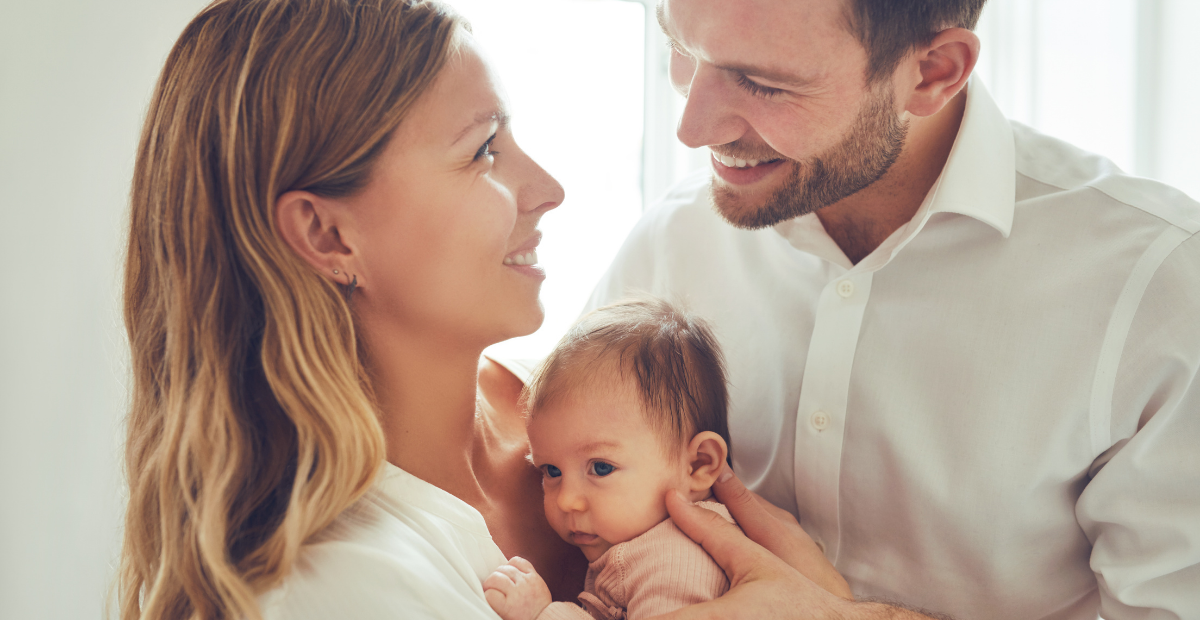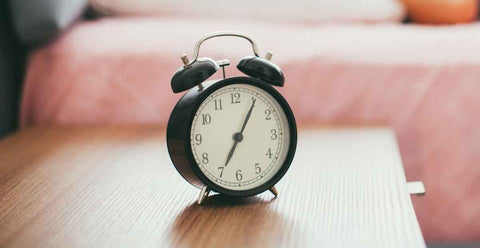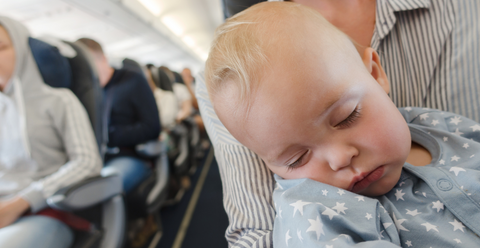The Top Sleep Mistakes New Parents Make
•
If you’re a new parent, or a soon-to-be new parent, it’s likely you have a lot on your mind, such as:
- Should I feed him breastmilk? What happens if I have to use formula?
- Where is the safest place for my baby to sleep?
- When should I start offering solids? Should I do purees, or baby-led weaning?
- Will my baby hit all her milestones on time? What should I do if she doesn’t?
- Will I ever sleep again?
The good news is, there’s a ton of information out there for new parents. The bad news is—some of it can be contradictory.
That’s why we here at Kulala offer evidence-based solutions, from a scientist and mother—so you know what’s true, what’s false, what works, and what doesn’t.
From the questions we’ve gotten through our app and over on Instagram, to ones we’ve seen parents ask in real life, we’ve compiled this list of the top mistakes new parents make when it comes to their babies’ sleep.
Having the wrong lighting in your child's bedroom
Our eyes are incredible in the way they adjust rapidly to various kinds of light, from sunlight, to shade, to candlelight. Which is why we can’t truly feel how different the actual light intensities are in those different environments.
What may seem to be just slightly brighter or darker can actually be a thousand times brighter or darker. Our eyes just can’t perceive that. Think about those times you put on makeup or tweezed your eyebrows in the bathroom, in artificial light, only to catch your reflection later in the mirror in your car. You likely noticed how different things looked. Little hairs you couldn’t see before were suddenly very clear, and that eyeshadow that looked great in the bathroom light looks too heavy in the daylight.
We underestimate the differences in light exposures around us because variations in light exposure are not visible to the naked eye. That's why it's hard to attribute any importance to light exposure on our sleep, or our children’s sleep at all—because we simply can't feel it.
But our eyes and brain are actually supremely sensitive to light. They measure it precisely. Even a little bit of light in the morning is enough to tell our body that it's time to wake up, and even a little bit of light at night can keep us up for hours.
That’s why the right light environment in your child’s bedroom can be so important.
Light is made up of different wavelengths that correspond to different colors. In the morning and during the day, sunlight has a higher proportion of blue light, signaling our bodies it’s time to wake up. In the evening, the blue light decreases as the amount of red light rises (see: the sunset, with its pink, orange, or red light). This decrease in blue light and increase in red light tells our bodies it’s time to get ready for sleep.
This is how circadian rhythm works. We don’t know exactly when circadian rhythm develops in utero, but we do know it exists by the third trimester. Meaning babies are born with a circadian rhythm already intact. So it stands to reason that working with your baby’s circadian rhythm, rather than in opposition to it, is the way to help them get the most sleep. You do this by regulating the light in their environment.
Melatonin, the hormone released at night that regulates our sleep, has been shown to decrease in the presence of blue light. Artificial lights, like incandescent lightbulbs and the light from TVs, tablets, and smartphones, may look yellow or white to our eyes—but they all release some amount of blue light. Even candlelight has a small amount of blue light in it.
So it stands to reason to help us sleep, we need to eliminate blue light from our sleep environments.
Science has shown that young children are even more affected by the disruptions caused by blue light, especially when it comes to sleep. Why? Scientists hypothesize it’s the fact that the lenses in their eyes, which transmit light from the outside world to the backs of the eyes, are clearer than in adults. These lenses become cloudier with age.
Whatever the case, the studies are clear: when children are exposed to high levels of blue light at night, their melatonin levels—which normally rise after sunset—are erased from their bodies. This makes it much harder for them to get to sleep—and much harder for them to stay asleep. That’s why it’s so important to eliminate blue light from their sleep environments.
You can do this by making two strategic purchases for your nursery (or, if baby is in your room, for your own room):
- Blackout shades, to block out any daylight during naptime, in the evenings, and/or in the mornings, when you want your baby to be asleep. (Amazon makes some basic, affordable, portable shades that we love. There are also these custom-cut blackout shades from Home Depot, or check out this great roundup from The New York Times.)
- A red light lamp, to use as you’re winding down for the evening, or during any night feedings or night wakings.
Red light has been used in labs for years in order to allow scientists to work with their subjects, be they humans or animals, without disrupting their sleep. Unlike blue light, red light does not disrupt melatonin production, which means it doesn’t disturb our circadian rhythms, or your child’s sleep.
Using only red light in the bedroom won’t keep your child awake longer, and will keep them sleepy during any potential night wakeups. The Kulala Baby Sleep Lamp is a great option for red light lamp, as it emits only safe-sleep DreamRedTM light, and looks beautiful in any nursery or bedroom.
What about sleep on the go?
We’ve heard before from new parents that they don’t want to make their babies’ rooms pitch-black, because they don’t want their babies to be unable to sleep anywhere else.
That’s an understandable concern. But there are other purchases you can make while on the go—like these basic, affordable, portable shades from Amazon, or items from Snoozeshade or Slumberpod, who both make products that are designed for getting your baby that much-needed blackout sleep when on the go.
Also, our Kulala Baby Sleep Lamp is small enough to be portable!
Having TV time before bed
Blue light promotes wakefulness and suppresses melatonin, making it harder for kids to go down to sleep. Screens that are not on night-mode emit a significant amount of blue light. They’re designed to stimulate; the opposite of what you want for your child when they’re getting ready for bed.
Turn off screens well before bedtime (at least one hour), and certainly keep them out of your child’s bedroom.
If you use your phone or computer next to a child at night, make sure you have night mode/ night shift turned on on max and the screen dimmed.
Having no regular sleep schedule for your family
Children and babies thrive on routine. Once baby is out of the fourth trimester, having an approximate time for all naps, feedings, bedtime, and waketime is essential.
Newborns (0-2 months old) aren't ready for an official schedule because they need to eat so often. At the very beginning, you’ll be feeding them every 2-4 hours until they’ve regained their birth weight. Even then, they’re tiny eating machines, and may even be mixing up their days and nights. One thing you can do from the beginning is trying to keep morning wake ups and evening bedtimes constant from day to day—this will entrain their circadian rhythm and make your later stages easier. The rest will be more in flux.
After 2 months, you can start working on regular daytime nap and feed times. We know that it can feel a bit unnatural to impose a schedule on your baby—you worry you’re depriving them of something by delaying it to meet the schedule. However, by establishing a sleeping and eating routine for our babies, we’re helping them understand and efficiently respond to feelings of fatigue and hunger. When a baby has a well-ingrained routine, they know what to expect at certain times of day. If they cry because their needs are not met—say dinner is delayed for an hour, or you’re out and their nap is delayed—you (and they!) are not left wondering what it is they need. At mealtime, your baby wants to eat; at naptime, your baby wants to sleep.
You can use the Kulala app to create the ideal schedule for your baby's age and weight. It helps their little bodies know what to expect from their days, and promotes better sleep. Bonus: having a schedule is beneficial to the whole family, especially if you have more than one kid.
Letting baby nap too long and/or putting them to bed too early
This goes hand in hand with the last piece of advice. You need a schedule not just to keep your baby happy, but to ensure his daytime sleep isn’t interrupting his nighttime sleep.
Babies (like adults) need enough sleep pressure to sleep well at night. We can regulate that with naps and bedtime.
A lot of the night sleeping problems we’ve seen in babies have to do with them getting too much daytime sleep. There are a lot of myths about naps out there, namely “never wake a sleeping baby” and “sleep begets sleep.” Both of these are wrong. Babies and toddlers only sleep for a certain amount of time, on average, in a 24-hour period. If they sleep too long during the day, with too many naps or naps that are too long, they will not be tired enough at night.
In general, total sleep need, and in particular daytime sleep, steadily decreases as babies get older. This necessitates the shortening and dropping of naps, as well as a potentially later bedtime, to maintain good nighttime sleep. The Kulala app can help you with an age-appropriate schedule for your child.
Those are the biggest mistakes we’ve seen with regards to baby and child sleep. If you have more to contribute, or have any questions, head over to Instagram to let us know.





